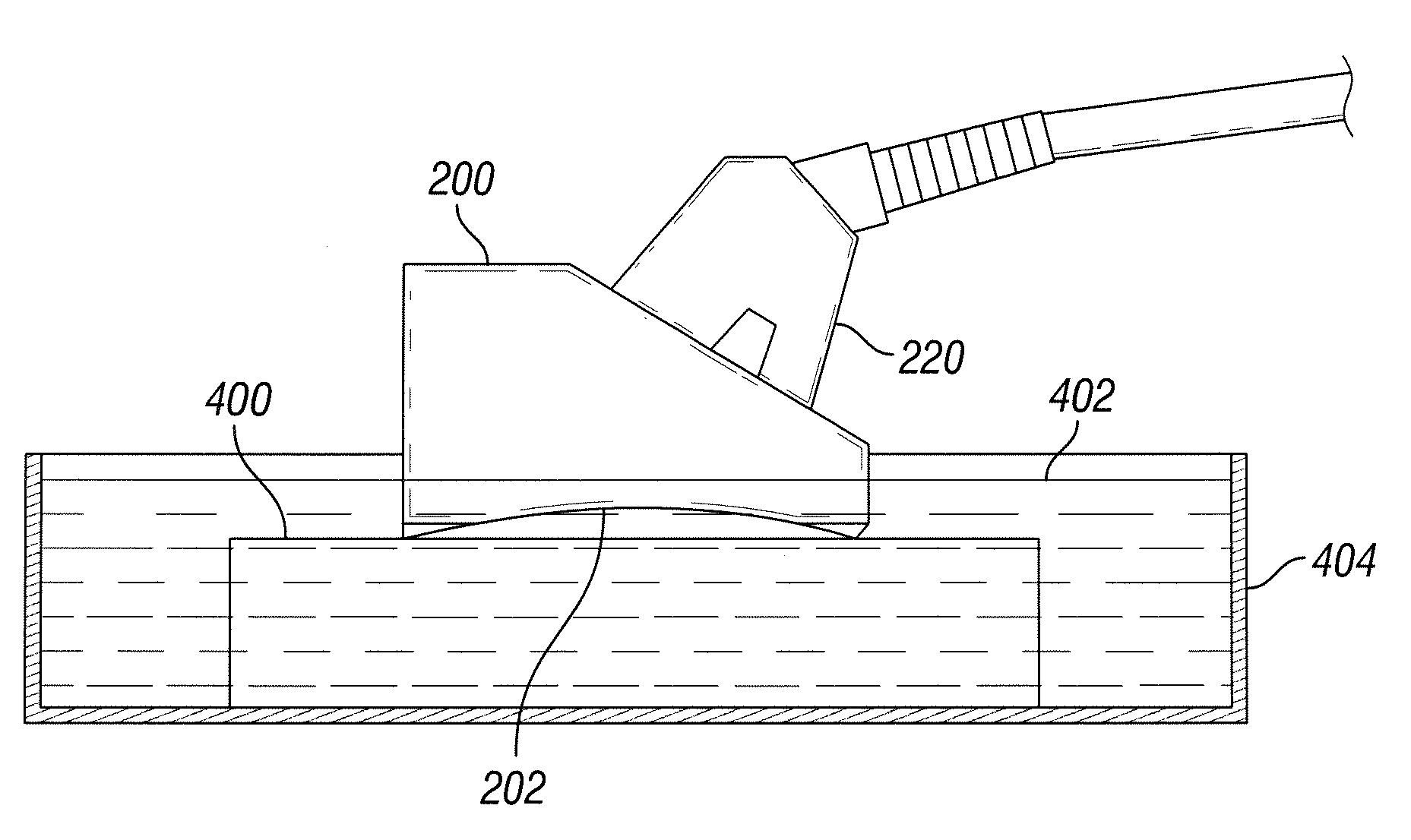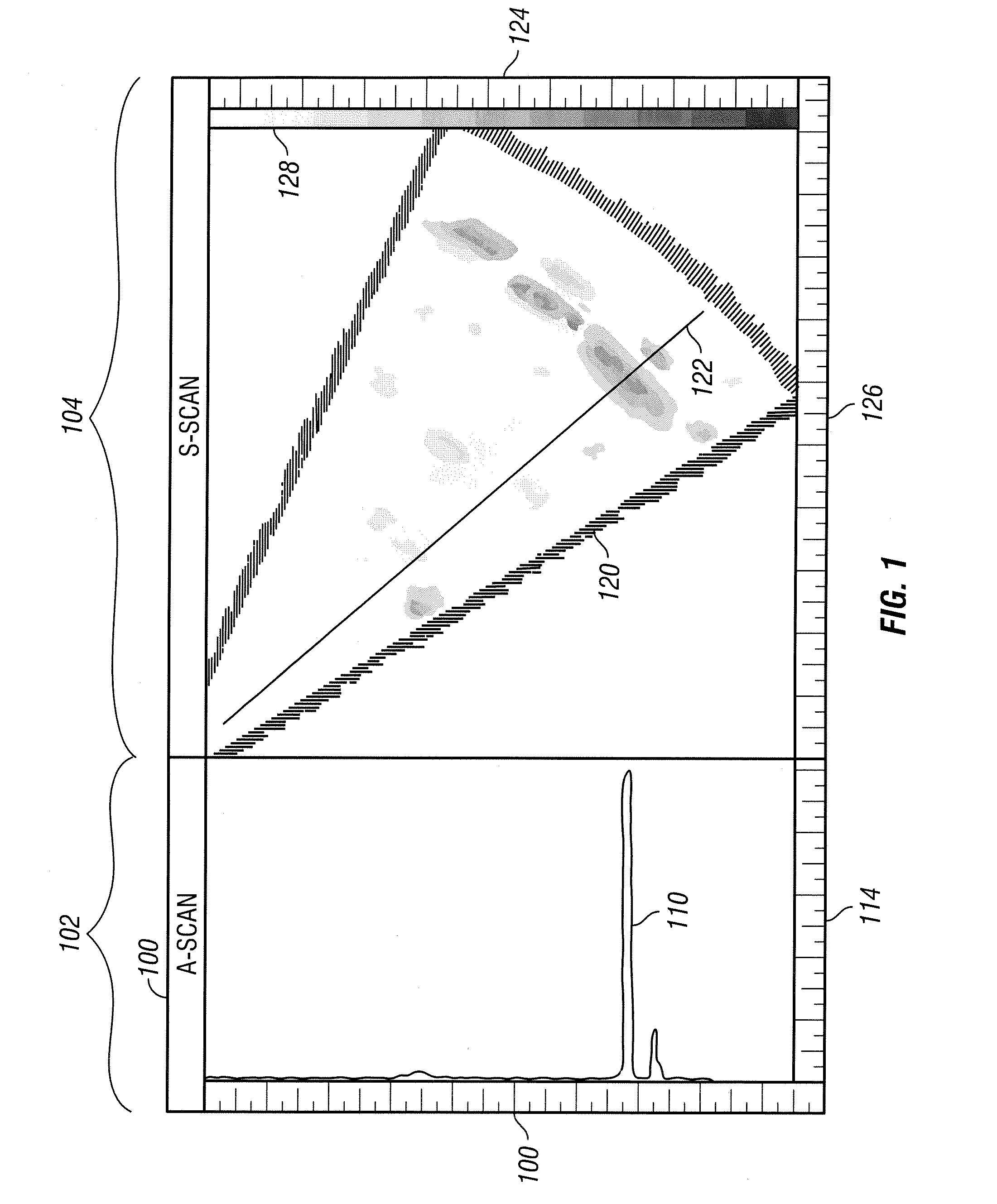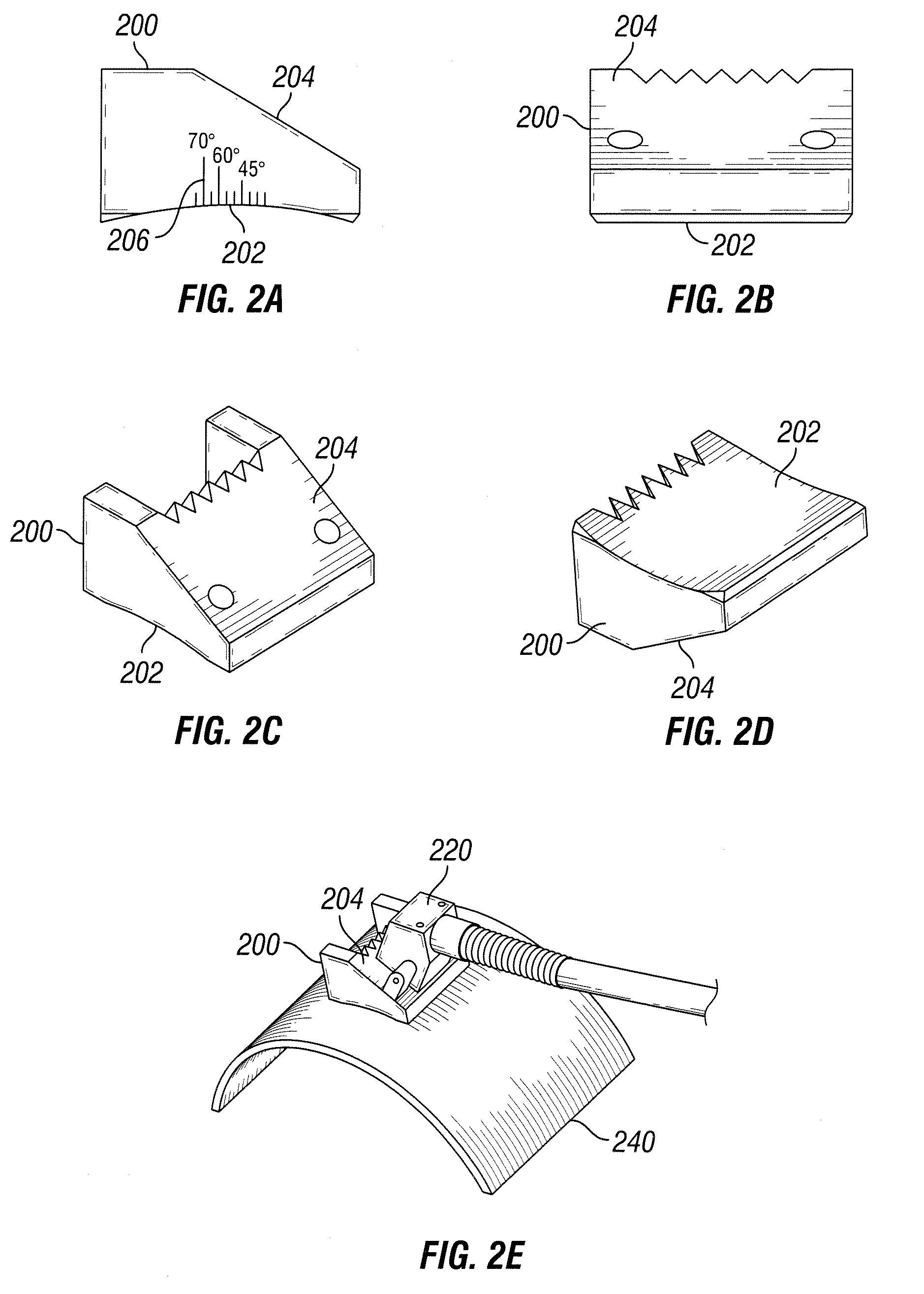Phased array ultrasonic examination system and method
a phased array and ultrasonic technology, applied in the direction of instruments, specific gravity measurement, measurement devices, etc., can solve the problems of physical flaws of solid objects such as mechanical equipment, loss of property or personal injury, and inability to detect flaws through visual inspection, so as to achieve complete and effective inspection and readily identify flaws
- Summary
- Abstract
- Description
- Claims
- Application Information
AI Technical Summary
Benefits of technology
Problems solved by technology
Method used
Image
Examples
Embodiment Construction
[0034]The current disclosure describes a method and apparatus for adapting PAUT for use in inspecting raw material in bulk, particularly seamless mechanical tubing and piping, which complies with present-day industry codes and standards (that currently provide only for A-scan processes) but allows for much more robust and thorough flaw detection capability. The present disclosure exceeds current code and industry standards by providing exceptional flaw detection not otherwise available using known methods.
[0035]The basic equipment required to practice the invention includes a PAUT flaw detector, a PAUT transducer, and an angled wedge. Currently, there are no known engineering standards developed by ASME, ASIM or API for the application of PAUT to bulk tubular goods. Although some adjustments will be made to the equipment for adapting it for use with bulk tubular goods, many of the requirements of ASTM E2700 for welds remain applicable.
[0036]The flaw detector of the present disclosur...
PUM
| Property | Measurement | Unit |
|---|---|---|
| incidence angles | aaaaa | aaaaa |
| incidence angles | aaaaa | aaaaa |
| incidence angles | aaaaa | aaaaa |
Abstract
Description
Claims
Application Information
 Login to View More
Login to View More - R&D
- Intellectual Property
- Life Sciences
- Materials
- Tech Scout
- Unparalleled Data Quality
- Higher Quality Content
- 60% Fewer Hallucinations
Browse by: Latest US Patents, China's latest patents, Technical Efficacy Thesaurus, Application Domain, Technology Topic, Popular Technical Reports.
© 2025 PatSnap. All rights reserved.Legal|Privacy policy|Modern Slavery Act Transparency Statement|Sitemap|About US| Contact US: help@patsnap.com



